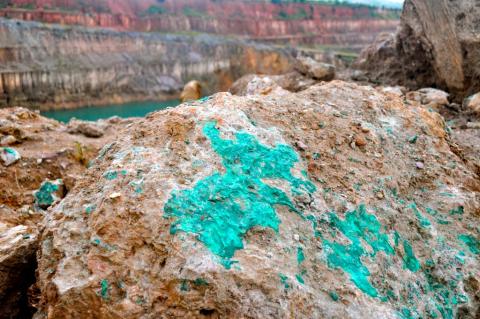
Half of Peru's mining revenues go to regional governments
Half of Peru's mining revenues go to regional governments
Peru’s EITI published its 3rd EITI reconciliation report, covering fiscal years 2011 and 2012, in February 2014. Fernando Castillo, Peru’s EITI National Coordinator and Member of the EITI International Board, says “It is important to highlight that, for the first time, local and regional and municipal governments and local universities manage more than half of the Peruvian state’s revenues from the extractive industries, as the report indicates”. There is no other EITI country in which regional governments manage more extractive revenues than the central government.
The EITI report reveals that the State collected US $ 12.2 billion from taxes, royalties and other fees from companies in the mining and oil and gas sector in the two years covered by the report. 55% of these revenues came from the mining sector. Two revenue streams, income tax (58%) and Royalties (36%), generated most of government income from extractive companies.
The extractive sector continues to be the motor of Peruvian economy. The sector represents 7% of the GDP. Mining exports were 62% of total exports and in 2012; investment in mining activities reached 75% of total investment in the country with expected US $ 57 billion investment in the sector in coming years.
Government revenues over this period were significantly larger than previous years despite a contraction in mining activities of around 9%. However, a 25% increase in hydrocarbon production compensated this mining contraction.
New mining taxes introduced in the first year of President Humala’s administration also contributed to sustain the level of fiscal revenues from mining activities. These two taxes, the “Special mining tax” and the “Special mining contribution” generated US $728 million in 2011 and 2012 combined. These taxes replaced the former voluntary social contribution put in place through a five year programme that ran from 2006 to 2011 and brought a total of US $782 million to the government coffers during that period. Vice-Minister of Mines, Guillermo Shinno, highlighted that “these new tax instruments, combined with the traditional corporate taxes and royalties, ensures that the State receives an adequate compensation from the resources it owns”.
Epifanio Baca, from Grupo Participacion Ciudadana, however pointed out “these latest reconciliation reports are still below the new EITI Standard’s requirements that are needed to ensure full accountability of extractive wealth”.
Please visit this page for more information on EITI implementation in Peru.
Related content

EITI launches 2023 EITI Progress Report

Sicomines: How the EITI in DRC helped secure 4 billion in additional revenue

Statement from the EITI Board Chair on the continued detention of Mr. Gubad Ibadoghlu
